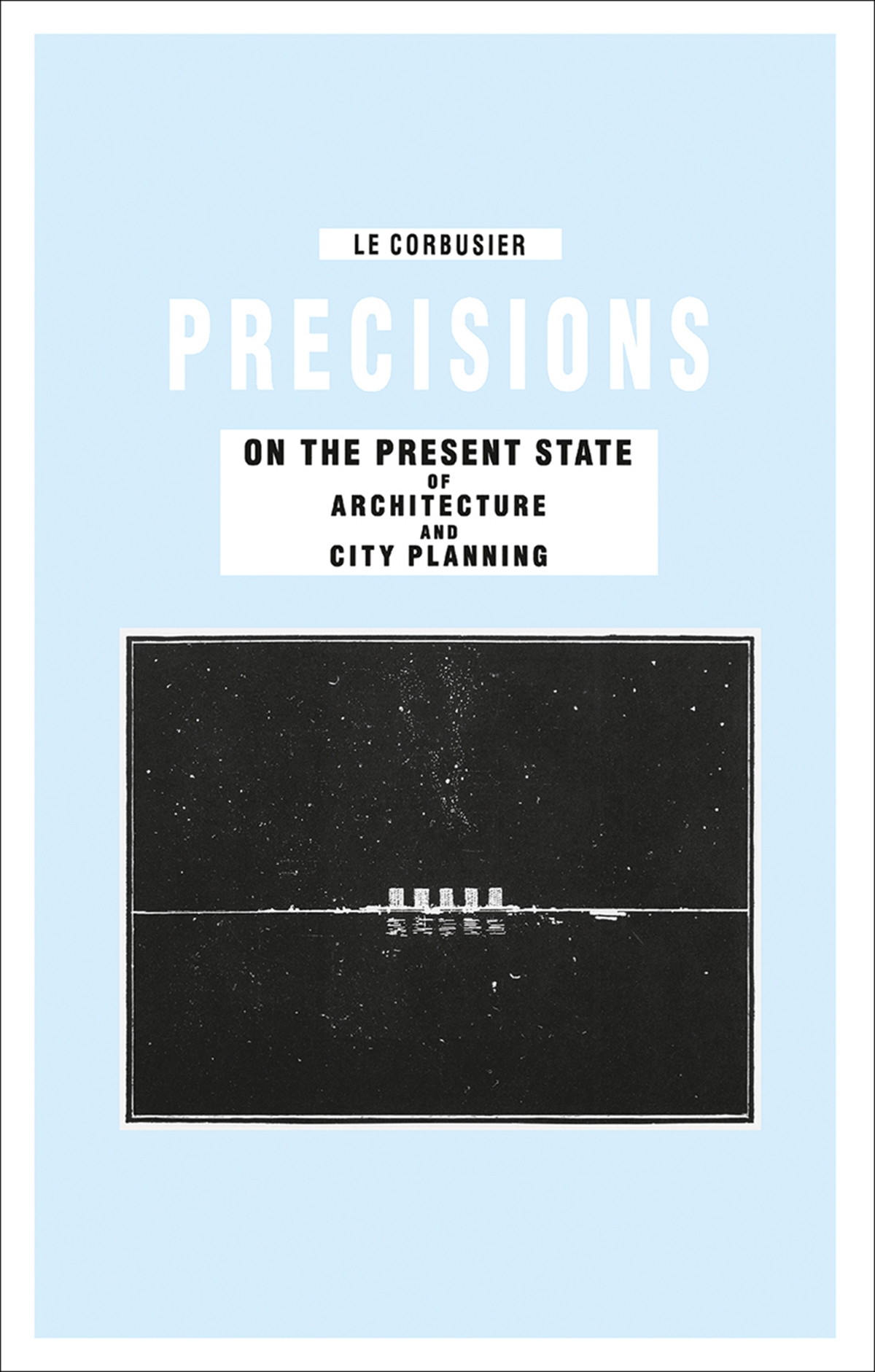Submitted by WA Contents
Le Corbusier-"Precisions on the present State of Architecture’’: It’s a Bible
United Kingdom Architecture News - Nov 24, 2015 - 11:57 9066 views

Jonis Hartmann, is a writer, architect and essayist- lives in Hamburg. Jonis Hartmann reviewed Le Corbusier and Tim Benton's book ''Precisions on the present State of Architecture''.
Jonis Hartman calls this book as a ''Bible''. That's Le Corbusier's own statement on his book "Precisions on the present State of Architecture", published for the first time in Paris 1930. It led so far a rather obscure history of publication, being published in German twice, 1964 and again 1987, and in English even later in 1991 at the MIT-Press. Now it is re-released as a glorious reprint of that 1991-edition by the Swiss publishing house Park Books in October 2015. It adds a brand-new introduction by long time Le Corbusier-specialist Tim Benton.
The heavy book indeed allures with its bible-like objectness, featuring a compact, subtle artwork designed very close to the original. Contentswise the "Precisions" are an astonishing contribution to Le Corbusier's publishing output, that is also as rich as his architectural, sculptural, designing and painting work. In contrast to his well composed, strategic other books of the twenties like "Vers une Architecture" (1922) or "Urbanisme" (1925), which trusted a consciously provoking image/ text collage that aggressively, almost like a film-cut, juxtaposed the pyramids of Gizeh against a modern biro, the "Precisions" are the result of a completely improvised image/ text production process by Le Corbusier, conceptualized from a series of lectures given in South America in 1929. Parallel to his own creative work a first major break-up with his own former axiomatic postulates of the principles of Architecture can be determined by that. Instead of a radically rational aesthetic of the machine-like, a constant growing of a free, poetic approach is taking over within the personal, typical Corbusier-themes such as light, measure, proportion, form and a programmatic use of colour and geometry.
According to Tim Benton's very concise and readable introduction Le Corbusier didn't prepare his lectures at all. To full opposition: he just sketched some few drawings on hotel paper sheets only hours prior to his lectures, often being the thematic result of a recent city walk, by which he analytically opened his speeches. He trusted fully in his own improvisational explorations of his own, already more than ten years long matured theorems, by drawing simultaneously on big sheets of papers or chalkboards, designing from anew, discarding, varying, changing or even enriching them with new important thoughts based on recent impressions from aerial views or cruises along the modern cities' exotic highways around Rio de Janeiro, Sao Paulo, Montevideo or Buenos Aires.
He himself labels this spontaneous method as an important creative act and obviously it has been of such an importance to him, that he forwarded all of his lectures, most of them held in Buenos Aires, after revising and re-sketching them in a collective reconstruction named "Précisions" to his Parisian publishers in the same year. Therefore it is absolutely essential for those "lessons in visual argumentation", that's how Tim Benton is tagging them, to be reproduced not only in full length but also including each original sketch, fragment, anacoluthon and marginalia.
This is exactly what Park Books' reprint is doing: the book is a Bible: complex and distracting, enlightening and perplexing. Le Corbusier's non-arranged spiritual matter unfolds itself as "streams of consciousness" to the reader, where common threads get lost from time to time, that hands it over to the reader to find their own thread navigating through redundancy sometime, in order to finally witness and comprehend a significant part of Le Corbusier's thinking at the peak of his creative vision. The book is playing faithfully an important role within a large batch of recent and late publications about aspects of Le Corbusier's work, which is indeed to make accessible again one of his major theoretical achievements in a precise editorial effort.
Jonis Hartmann is a Member of Forum Hamburger Autoren and writers' room. His publications of texts featured in magazines, a.o. Edit, Akzente, Kultur und Gespenster. Jonis' architectural studies featured in Weimar, Kassel and Roma- and his phd thesis on "Repetition and Ambiguity- Design-tools of Architecture" 2015 at University of Kassel with Prof. Georg Augustin. To be published by Springer Press April 2016.